- With standard equipment
- With safety pack
Find more information in the General Comments section of the assessment
Find more information in the Rating Validity tab of the assessment
- See More
- See More
- See More
- See More
- Good
- Adequate
- Marginal
- Weak
- Poor
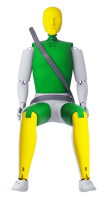 Passenger
Passenger
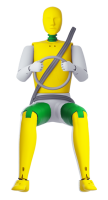 Driver
Driver
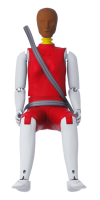 Rear Passenger
Rear Passenger
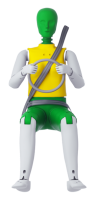 Driver
Driver
 Car
Car
 Pole
Pole
 Rear Seat
Rear Seat
 Front Seat
Front Seat
- Good
- Adequate
- Marginal
- Weak
- Poor
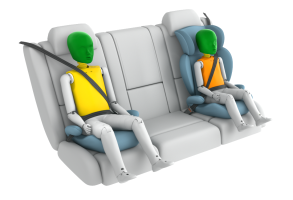
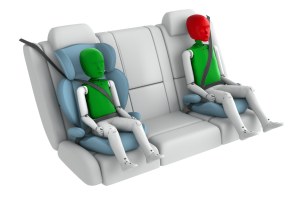
Passenger
outboard
Fitted to the vehicle as standard
Not fitted to the test vehicle but available as option
Not Available
-
i-Size CRS
-
ISOFIX CRS
-
Universal Belted CRS
Easy
Difficult
Safety critical
Not allowed
| Seat Position | |||
|---|---|---|---|
| Front | 2nd row | ||
| Passenger | Left | Right | |
| Maxi Cosi 2way Pearl & 2wayFix (rearward) (iSize) | |||
| Maxi Cosi 2way Pearl & 2wayFix (forward) (iSize) | |||
| BeSafe iZi Kid X2 i-Size (iSize) | |||
| Maxi Cosi Cabriofix & FamilyFix (ISOFIX) | |||
| BeSafe iZi Kid X4 ISOfix (ISOFIX) | |||
| Britax Römer Duo Plus (ISOFIX) | |||
| Britax Römer KidFix XP (ISOFIX) | |||
| Maxi Cosi Cabriofix (Belt) | |||
| Maxi Cosi Cabriofix & EasyBase2 (Belt) | |||
| Britax Römer King II LS (Belt) | |||
| Britax Römer KidFix XP (Belt) | |||
Easy
Difficult
Safety critical
Not allowed
For the impact tests, the 10 year dummy was sat on a booster cushion. Owing to limited rear space the results of the dynamic tests on the 10 year dummy were done in a separate test. In the frontal offset test, protection of the 10 year dummy was rated as at least adequate. However, the shoulder belt slipped between the clavicle and the upper arm and the score for the dummy in this test was penalised. Protection of the 6 year dummy, sat in a high-back booster, was rated as good and adequate for the head and neck respectively but dummy readings of chest deceleration indicated marginal chest protection. In the side barrier test, dummy readings indicated good protection, apart from the head of the 10 year dummy. The head bottomed out the side curtain airbag, making contact, through the deflated airbag material, with the trim on the C pillar. Consequently, all points were lost for the 10 year dummy in this test. The front passenger airbag can be automatically disabled to allow a rearward-facing restraint to be used in that seating position. The information provided to the driver regarding the status of the airbag met Euro NCAP's requirements.
- Good
- Adequate
- Marginal
- Weak
- Poor

Head Impact 21.0 Pts
Pelvis Impact 0.0 Pts
Leg Impact 6.0 Pts
| System Name | Pre Collision Assist (PCA) | ||
| Type | Auto-Brake with Forward Collision Warning | ||
| Operational From | 5 km/h | ||
| Additional Information | Defaults on for every journey; operates above 40km/h and in low ambient light | ||
| PERFORMANCE | | |||
| Autobrake Function | |||
| Avoidance | Mitigation | ||
|
Running Adult crossing from Farside
|
Collision avoided up to 45 km/h | Impact mitigated up to 60 km/h | |
|
Walking Adult crossing from Nearside -25%
|
Collision avoided up to 40 km/h | Impact mitigated up to 60 km/h | |
|
Walking Adult crossing from Nearside -75%
|
Collision avoided up to 50 km/h | Impact mitigated up to 60 km/h | |
|
Running Child from behind parked vehicles
|
Collision avoided up to 40 km/h | Impact mitigated up to 50 km/h | |
The Mustang has an 'active' bonnet. Sensors in the bumper detect when a pedestrian has been struck and actuators lift the bonnet, creating more space to the hard structures in the engine bay. Ford demonstrated that the system worked robustly for a variety of pedestrian statures and over a range of speeds and, accordingly, the tests were performed in the raised (deployed) position. Test results were good over almost the entire bonnet surface. Protection of the pelvic region was poor in all areas tested but the bumper provided good protection to pedestrians' legs and scored maximum points in Euro NCAP's tests. The autonomous emergency braking system can detect pedestrians as well as other vehicles and performed well in tests of this functionality.
- Good
- Adequate
- Marginal
- Weak
- Poor
| Applies To | Front seats | ||
| Warning | Driver Seat | Front Passenger(s) | Rear Passenger(s) |
| Visual | |||
| Audible | |||
|
|||
| System Name | Lane Keeping Aid |
| Type | Lane Keep Assist and Lane Departure Warning |
| Operational From | 65 km/h |
| Warning | Audible |
| Performance | |
|
LKA Confirmation Test
|
Pass (4/5) |
|
LDW Confirmation Test
|
Pass |
| System Name | Pre Collision Assist (PCA) | |||
| Type | Forward Collision Warning with Auto-Brake | |||
| Operational From | 5 km/h | |||
| Additional Information | Default On | |||
| Performance | | ||||
| Autobrake Function Only | Driver reacts to warning | |||
| Operational Speed | 5-300 km/h | 5-300 km/h | ||
| Approaching a stationary car | See AEB City | Crash avoided up to 75km/h.Crash speed reduced up to 80km/h. | ||
| Approaching a slower moving car | Crash avoided up to 70km/h. | Crash avoided up to 80km/h. | ||
| Following a car at short distance | ||||
| Car in front brakes gently | Avoidance | Avoidance | ||
| Car in front brakes harshly | Mitigation | Mitigation | ||
| Following a car at long distance | ||||
| Car in front brakes gently | Avoidance | Avoidance | ||
| Car in front brakes harshly | Avoidance | Avoidance | ||
The Mustang has a seatbelt reminder system for the front seats only. The latest Mustang has an autonomous emergency braking system that operates at highways speeds. In tests, the system performed well, with collisions avoided or mitigated in almost every test speed and scenario. Also standard is a lane keeping assistance system which gently steers the car away from a lane marking if it is drifting out of lane.
- Specifications
- Safety Equipment
- Videos
- Rating Validity
Specifications
Tested Model Ford Mustang 5.0 Fastback, LHD
Body Type - 2 door coupe
Year Of Publication 2017
Kerb Weight 1768kg
VIN From Which Rating Applies - all 2018 model year Mustang Fastbacks
Class Roadster sports
Safety Equipment
Note: Other equipment may be available on the vehicle but was not considered in the test year.
Fitted to the vehicle as standard
Fitted to the vehicle as part of the safety pack
Not fitted to the test vehicle but available as option or as part of the safety pack
Not available
Not applicable
Videos
Rating Validity
Variants of Model Range
| Body Type | Engine & Transmission | Model Name/Code | Drivetrain | Rating Applies | |
|---|---|---|---|---|---|
| LHD | RHD | ||||
| * 2 door coupe | 5.0 V8 Manual and Automatic | Mustang Fastback 5.0 V8 | 4 x 2 |
 |
 |
| 2 door coupe | 2.3 EcoBoost Manual and Automatic | Mustang Fastback 2.3 EcoBoost | 4 x 2 |
 |
 |
| 2 door convertible | 5.0 V8 Manual and Automatic | Mustang Convertible 5.0 V8 | 4 x 2 |
 |
 |
| 2 door convertible | 2.3 EcoBoost Manual and Automatic | Mustang Convertible 2.3 EcoBoost | 4 x 2 |
 |
 |
* Tested variant

Find more information in the General Comments section of the assessment
The Ford Mustang has been reassessed following changes made to the latest version. Cars which can be ordered from July 2017 onwards are equipped as standard with Ford's Pre Collision Assist (with Pedestrian Detection, Forward Collision Warning and Autonomous Emergency Braking) and Lane Keeping Aid. Structurally, the new vehicle is identical to the last, so this assessment uses the crash tests performed previously. The restraint system has been updated to prevent the airbag bottoming out for driver and passenger. In addition, the automatic airbag deactivation now meets Euro NCAP's requirements.
 Share
Share
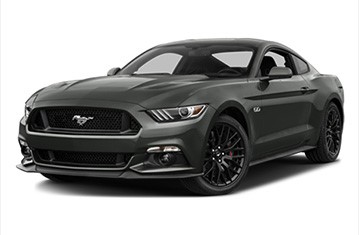










The passenger compartment of the Mustang remained stable in the frontal offset test. Dummy readings indicated good protection of the knees and femurs of the driver and passenger dummies. Analysis of the dummy data showed that the driver's head had 'bottomed out' the airbag i.e. there was insufficient pressure in the airbag to prevent the head from contacting the steering wheel through the deflated airbag material. The head of the passenger dummy also bottomed out the airbag against the dashboard, owing to insufficient inflation of the airbag and inadequate restraint for larger statures by the front passenger seatbelt load-limiter. Ford have shown improved performance from the airbags fitted to the latest Mustang, with bottoming-out avoided. However, the frontal offset test was not repeated and the scores reflect the performance seen in the original test. In the full-width rigid barrier test, protection of the driver was good apart from the chest, protection of which was adequate. However, the rear seat passenger slipped under the lap portion of the seatbelt (a phenomenon known as 'submarining') and the score for the knee, femur and pelvis body region was penalised and protection was rated as poor. Protection of the chest was also rated as poor as the rear seatbelt (which has neither pre-tensioners nor load-limiters) showed an excessively high tensile force in the test. Dummy readings of head deceleration indicated weak protection of the head for the rear passenger. In the side barrier test, the Mustang scored full points with good protection of all critical body areas. Even in the more severe side pole test, protection of the chest was adequate and that of other body regions was good. Tests on the front seats and head restraints demonstrated a marginal level of protection against whiplash injury in the event of a rear-end collision. A geometric assessment of rear seats indicated poor whiplash protection in these seating positions. The latest Mustang has an autonomous emergency braking system as standard. The system performed well in tests of its functionality at the low speeds typical of city driving at which many whiplash accidents occur. However, the system did not qualify for points as the car's passive whiplash protection was inadequate.